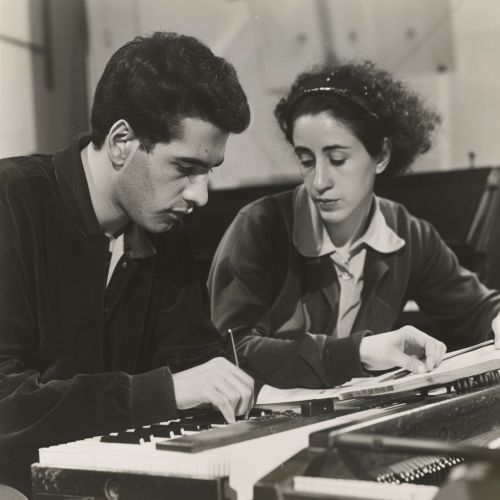Eshkol-Wachman Movement Notation
Introduction
Eshkol-Wachman Movement Notation (EWMN) is a notation system for recording movement on paper or computer screen. It was developed by Israeli dance and movement researchers Noa Eshkol and Abraham Wachman in the late 1950s. The notation system is used in various fields such as dance, therapy, sports, animation, and robot motion. EWMN is a universal language that can describe any kind of movement, from the simplest to the most complex.
History
Noa Eshkol, a dancer and choreographer, and Abraham Wachman, an architect, developed the Eshkol-Wachman Movement Notation system in Israel in the late 1950s. The system was initially designed to notate dance movements, but its application has since expanded to other fields. The notation system was a result of Eshkol and Wachman's shared interest in movement and space, and their desire to create a universal language for movement notation.


Principles
The Eshkol-Wachman Movement Notation system is based on a few fundamental principles. First, it views the body as a structure made up of segments connected by joints. Each segment can move in relation to the segment to which it is connected. The notation system uses symbols to represent these movements.
Second, the EWMN system is based on the principle of relativity. This means that the movement of one body segment is always described in relation to another body segment.
Third, the EWMN system uses a spatial coordinate system to describe the position of the body in space. This system is based on the concept of a sphere, with the body at the center. The sphere is divided into eight equal parts, and each part is assigned a number from 1 to 8. The position of the body in space is then described using these numbers.
Notation System
The Eshkol-Wachman Movement Notation system uses a combination of symbols, numbers, and letters to represent movement. The symbols represent the type of movement (such as rotation or translation), the numbers represent the direction of movement, and the letters represent the body segment that is moving.
For example, a forward bend of the torso would be notated as "F 1 T", where "F" stands for "forward", "1" stands for the direction of movement (forward), and "T" stands for "torso". A rotation of the right arm would be notated as "R 3 RA", where "R" stands for "rotation", "3" stands for the direction of rotation (right), and "RA" stands for "right arm".
Applications
The Eshkol-Wachman Movement Notation system has been used in a variety of fields. In dance, it is used to notate choreography and to analyze movement. In therapy, it is used to document and analyze the movement of patients with movement disorders. In sports, it is used to analyze the movement of athletes and to design training programs. In animation and robot motion, it is used to program the movement of animated characters and robots.
Criticisms and Limitations
While the Eshkol-Wachman Movement Notation system is widely used, it has been criticized for its complexity and difficulty of use. Some critics argue that the system is too abstract and mathematical, making it difficult for non-experts to understand and use. Others argue that the system is too rigid and does not allow for the expression of individuality and creativity in movement.
Despite these criticisms, the Eshkol-Wachman Movement Notation system remains a valuable tool for the analysis and notation of movement. Its universal language allows for the description of any kind of movement, making it a versatile tool for researchers and practitioners in various fields.
See Also
Dance Notation Labanotation Benesh Movement Notation
